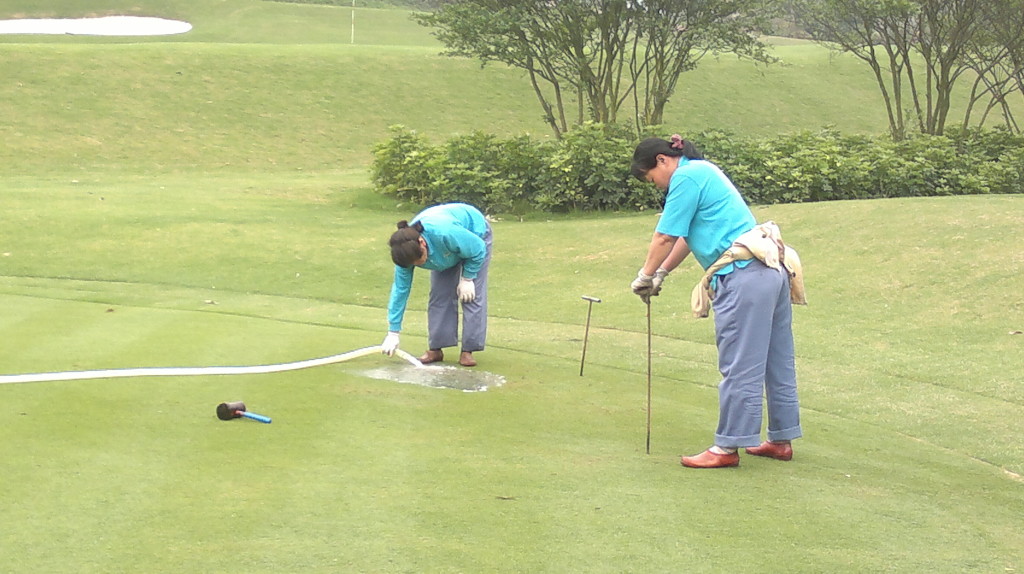Performance turf requires heat and moisture and it is inevitable that you will have to turn to your irrigation system at this time to keep your green’s progress moving forward. Failure to keep up now could result in a disastrous season later on when the green dries out unevenly, succumbs to Localised Dry patch or simply doesn’t perform due to a lack of moisture early in the season.
Tag: agronomy

Cool Season and Warm Season Grasses
The main difference between the two groups is the way in which they photosynthesise or produce food for themselves. The first product of photosynthesis in cool season grasses is a 3 Carbon sugar molecule so these grasses are commonly referred to as C3 grasses. In warm season grasses the first
Over-seeding Fact and Fiction
Another very popular subject on this site is over-seeding of greens in Autumn.
Over-seeding is commonly carried out as part of the autumn bowling green maintenance and renovation program and is very often a disappointment.
You would expect this work to quickly fill in the bare patches and spaces in the sward left by disease, localised dry patch and a host of other green problems, but this is very often not the case…why?
The answer to most disappointing results from over-seeding is “competition”. Competition from the mature, indigenous grasses whether fine or weed grasses like annual meadow grass usually reduces the success or survival rate from over-seeding to a very small percentage.
This quite often comes as a surprise to greenkeepers who have observed a very good “take” shortly after seeding (7-14 days). At this early stage it is not uncommon to see vigorous lines of dense new seedlings bursting forth from the green. This however, is usually a false reading.
At this very Read more
Symptoms, Causes and Cures in Bowls Green Maintenance
One of the easiest, cheapest and effective methods of killing moss in turf is to apply Ferrous Sulphate. Therefore, on Bowls Central, I could sell many tonnes of Ferrous Sulphate at a nice profit margin every year by simply pandering to conventional thinking, but you won't find any for sale here. Let me explain why:
End of Season Bowls Green Maintenance
Its time again for clubs to be thinking about the end of season maintenance program and many of these programs will follow “tradition” and will include the application of several tonnes of high sand content top-dressing.
However, one of the most prevalent problems on bowling greens in the UK is that of Localised Dry Patch LDP a condition that causes soil to become hydrophobic (water repellent) and which is undoubtedly related to excessive sand content in rootzone
The autumn renovation program is the only real chance clubs have to start to make inroads into the major problems with their greens and the only time when it is possible to make large corrections to thatch and compaction; and you’ve guessed it, thatch is another major problem associated with LDP.
Localised Dry Patch creates large dry areas on greens where grass dies back and the surface is disrupted. All attempts to re-wet these areas by watering the green are doomed to failure due to the water repellent nature of the underlying soil.
The application of yet more sandy top-dressing is not going to make this better; indeed it will in most cases make the problem worse next year.
It would be more beneficial to start the process of recovery by following a program that includes thatch reduction, wetting agent application and overseeding. All autumn programs should include the application of a granular fertiliser to correct any underlying deficiencies, usually a low N and high K product.
Where moss is a problem; and with LDP it usually is, you should use a proprietary moss-killer or lawn sand between 2 and 4 weeks before thatch removal work.
